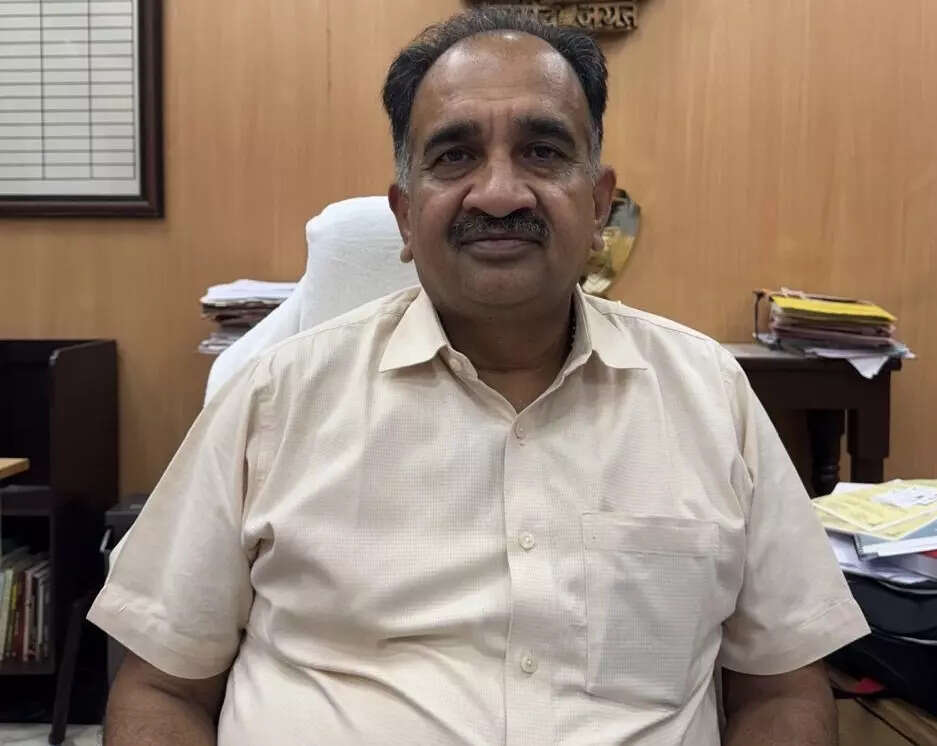
Rajasthan, a state renowned for its vast mineral wealth and geological diversity, is undergoing a quiet transformation in how it governs its mining sector.
At the helm of this change is Deepak Tanwar, Director of Mines & Geology, Government of Rajasthan. Under his leadership, the department is not only embracing cutting-edge technologies like Artificial Intelligence (AI), Geographic Information Systems (GIS), and drone-based surveillance but is also pioneering policy models aimed at curbing illegal mining, enhancing revenue collection, and promoting sustainable practices.
In this exclusive interview with ETGovernment’s Kartik Sharma, Tanwar offers insights into the state’s bold vision for digital transformation in the mining sector, the challenges of implementation in a geographically and logistically complex landscape, and the critical role of public-private partnerships in balancing economic growth with environmental responsibility.
Edited excerpts:
Please elaborate on the focus and intended outcomes of the recent conference held in Rajasthan?
The recent conference was a collaborative effort between the Mining Engineers’ Association of India (Jodhpur Chapter) and MBM Engineering College, Jodhpur. The central theme—Artificial Intelligence in Mining: Applications, Promises, and Challenges—was both timely and forward-looking. Artificial Intelligence is now permeating even the most traditional sectors, and mining, with its vast potential for digital transformation, is no exception. The conference aimed to create a shared platform for professionals, scholars, and policymakers to explore how AI could enhance efficiency, safety, and transparency in mining operations while also deliberating on the unique challenges its implementation entails.
Mining has long been considered one of the more difficult sectors in terms of governance and implementation of new technologies. How practical is it to integrate AI in such a sector, and what are the primary challenges?
You’re right—mining is a complex sector, deeply dependent on local geography, legacy infrastructure, and long-established practices. But every challenge is also an opportunity. With determination, innovation, and systemic commitment, transformative change is possible. AI technologies such as the Internet of Things (IoT), GPS, geofencing, RFID readers, drone surveillance, satellite imaging, and real-time data integration offer enormous potential. They enable precise geological modeling, predictive analytics, and comprehensive environmental monitoring. These digital solutions can impact every stage of mining—prospecting, extraction, reclamation, and even post-mining restoration—turning traditional bottlenecks into avenues of progress.How has the use of AI and digital technologies impacted the Mines Department’s performance, particularly in terms of revenue generation?
The results have been quite significant. In the previous financial year alone, the department registered a revenue of ₹9,228 crore—a 24% increase. Much of this growth is attributable to the digital transformation of our systems. From online lease applications to real-time royalty collection and monitoring, digitisation has brought transparency, speed, and accountability. Our focus on AI-driven geological models and the public availability of critical technological tools have made Rajasthan a frontrunner in modernising the mining sector.
One of the most pressing issues in mining governance is illegal mining. What strategic model has your department adopted to combat this enduring challenge?
Illegal mining remains one of our most serious concerns, especially given Rajasthan’s sheer geographic spread of 3.42 lakh square kilometres and its rich endowment of mineral resources—87 types of major minerals, 57 minor minerals, and 19 types of precious stones. These are often found in remote and hard-to-monitor locations. Materials like masonry stone and river sand, which lie close to the surface, are particularly vulnerable.
To address this, we’ve developed a four-tier model rooted in digital integration and AI. First, we have geo-referenced all lease boundaries to precisely demarcate legal mining zones. Second, all vehicles involved in mineral transport are equipped with mandatory GPS and RFID tags, enabling real-time tracking. Third, royalty receipts are now generated only when a vehicle’s movements comply with validated digital protocols—unauthorised transport automatically triggers denial of receipts. Fourth, we’ve deployed AI-powered surveillance cameras capable of reading vehicle details and identifying mineral types, cross-verifying them with transport department databases to ensure compliance with load and vehicle norms. This integrated approach enhances transparency and makes tampering nearly impossible.
Has this model been implemented yet, and what outcomes do you anticipate?
Yes, we began implementing the model earlier this financial year, and we aim for full-scale operation by January. The expected outcomes are multi-fold: a sharp decline in illegal mining activities, automatic licence cancellations for non-compliant actors, increased departmental accountability, and a significant rise in revenue. Perhaps most importantly, the system will enhance public trust through its transparent and automated enforcement mechanisms.
Beyond enforcement and revenue, how critical is public awareness in shaping sustainable mining practices?
Public awareness is absolutely essential. Sustainable mining cannot be achieved through regulation alone—it must be rooted in community consciousness. We are working to embed environmental education into school curricula and to hold community-based problem-solving sessions that empower citizens. Raising awareness about occupational health hazards such as silicosis is also a priority. A well-informed public acts as both a watchdog and a partner, ensuring that sustainability becomes a shared social value, not just a government mandate.
What is your perspective on sustainable mining and the role of Public-Private Partnerships (PPPs) in achieving long-term goals?
Sustainability in mining is a fundamental responsibility—not just an administrative goal, but a moral obligation. We are committed to ensuring that human development and environmental stewardship move hand in hand. This includes strict enforcement of environmental regulations, pollution control for air and water, afforestation drives, and systematic land restoration after mining activities cease.
We also encourage in-state value addition to boost employment and local economic gains. In line with the “best out of waste” philosophy, we’re exploring ways to reuse overburden and transform mining waste into productive material for construction and manufacturing. Public-Private Partnerships are crucial in this effort. They bring innovation, investment, and efficiency—key ingredients for achieving sustainability at scale.
What is Rajasthan’s broader vision for the future of the mining sector, especially in the context of technology and environmental stewardship?
Our vision is bold yet achievable: to make Rajasthan a national model of technologically advanced, environmentally responsible, and economically vibrant mining governance. We’re investing in cutting-edge digital infrastructure, deploying AI and data analytics, and fostering transparent, efficient administrative systems. At the same time, we are strengthening environmental safeguards through rigorous regulations, rehabilitation programs, and sustainable resource use.
Ultimately, our aim is to harmonise technology, policy, and public engagement. With this triad in place, Rajasthan can lead the way in creating a mining ecosystem that is not just productive, but also just and sustainable. The path ahead is challenging, but we are confident that with continuous innovation and collaborative effort, we can achieve it.

